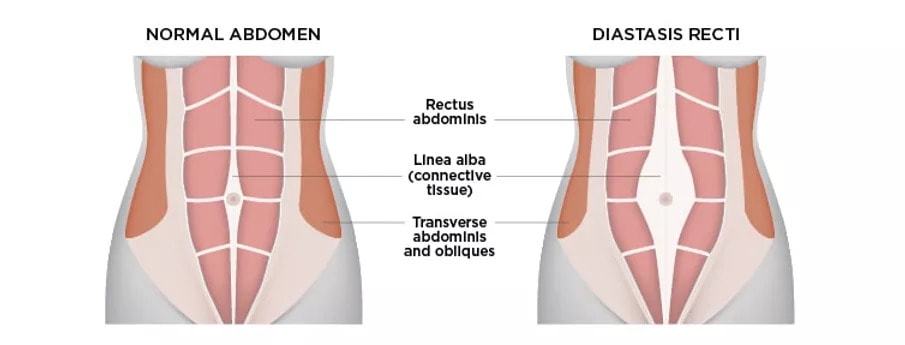What is Diastasis Recti?
Diastasis Recti is a separation of rectus abdominis muscles in the midline at the linea alba associated with loss of abdominal wall support. it is when the continuity and integrity of the abdominal musculature is disrupted. You may note the separation above, below or at the level of the umbilicus (belly button). Any separation larger than 2 cm or two finger widths is considered significant. Find a Diastasis Recti specialist near you! Discover a specialized physical therapy treatment for Diastasis Recti to regain core strength. Start your healing journey now!
The abdominal muscles act as a corset around your trunk, supporting your organs, spine and pelvis just as the rib cage protects your heart and lungs. Diastasis recti, is a break in this support system and limits your activities. When this stability is interrupted it increases the strain on the lumbar spine and pelvis resulting in pain in this area. If severe, it can result in abdominal herniations and create a life threatening situation.


Who is Affected
It is misconception that only pregnant women suffer from diastasis recti. It can occur in women past child bearing age as well as in men. It is most common in the last trimester of pregnancy and may be present postpartum. While painless, many considered this disfiguring. It can also progressively lead to low back, SIJ and pelvic pain.
Some Risk factors associated with Diastesis Recti are:
- weak abdominal muscles
- history of multiple abdominal surgeries
- valsava maneuver (excessive breath holding or straining) during labor
- multiple birth pregnancy
- subsequent pregnancies or large baby
Who is a Candidate for Diastasis Recti Physical therapy treatment
Pain will encourage people to seek rehabilitation for diastasis recti. But it is also beneficial to rehab a painfree diastasis recti since it limits your ability to do sit ups (for example getting in/out of bed) and increases the potential for abdominal herniations. In pregnant women with severe diastasis recti, it limits fetal protection. How we can Help You?
If you have Diastasis Recti, you should care to avoid raising your legs, doing sit ups or curl up exercises and change the way you get in and out of bed to prevent exacerbation. It is a misconception, that core strengthening exercises alone will help correct diastasis recti.
